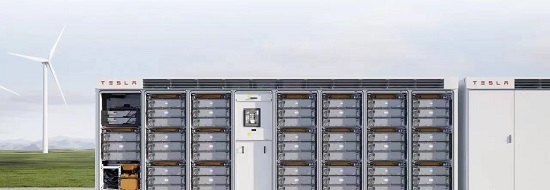Until recently, each LFP lithium battery super storage system had an energy storage capacity of 2.6 MWh.
Now, the page is no exaggeration to say that each Megapack energy storage system is rated at 3.9 MWh of storage capacity, an increase of nearly 50%.

Tesla Lithium Battery Power Station
According to report, the new Megapack units are larger and heavier than before. At 33,000 pounds, they are 64 percent heavier. They are also 6 feet longer, 2 inches wider and 1 foot taller than their predecessors.
Last year, Tesla broke ground for a new Megapack factory in Lathrop, California. The speculation on the internet at the time was that the energy storage systems produced there would be larger and use LFP lithium iron phosphate batteries provided by CATL.
At the time, Musk said, but with stationary storage, energy density is not that important because it just stays on the ground, so I think the vast majority of stationary storage will be lithium iron phosphate lithium-ion batteries.
In fact, the best source is probably all the old iron engine blocks and internal combustion engine cylinder heads discarded in car recycling yards around the world.
Lithium-ion batteries made of nickel, manganese and/or cobalt have a higher energy density than lithium-iron batteries, so more LFP batteries are required to achieve the same energy storage capacity.
That’s a problem if the battery pack is going to fit into a truck or car. Heavier vehicles require heavier frames, heavier suspension and steering components, and heavier brakes. But if it’s going to make it into grid-scale energy storage, all it needs is to make sure the concrete foundations it relies on can handle the extra weight.
 +8613906047998
+8613906047998


